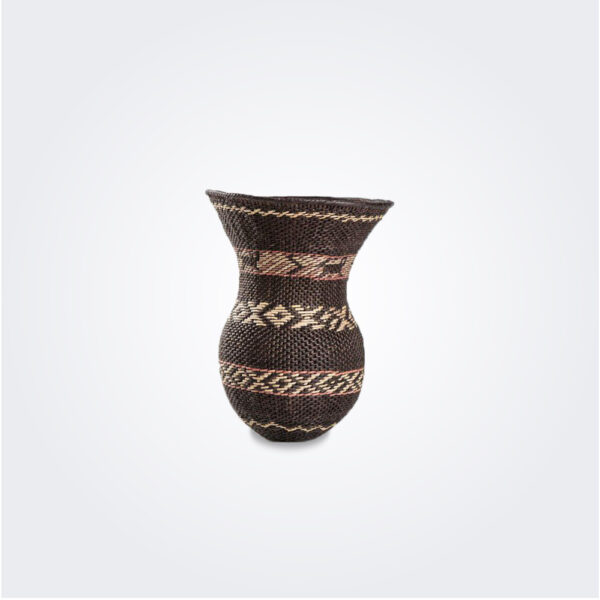Dir. Cirro Guerra (2015).
Starring Antonio Bolivar, Brionne Davis, Jan Bijvoet, Luigi Sciamanna, Nicolás Cancino, Nilbio Torres, Yauenkü Migue. Currently screening at independent cinemas internationally
“the display I witnessed in those enchanted hours was such, that I find it impossible to describe in a language that allows others to understand its beauty and splendor; all I know is that, like all those who have shed the thick veil that blinded them, when I came back to my senses, I had become another man.”
— Koch-Gruünberg, 1907
After blasting through the festival circuit to widespread acclaim and numerous accolades including the Art Cinema Award at Cannes, the immersive cinematography and lauded sound-design of Colombian director Ciro Guerra’s third feature Embrace of the Serpent is set to lure ever-wider audiences into the Amazon.
Whilst refusing the linearity and factual conventions of anthropological documentary, director Guerro’s criticism of colonial atrocity leaks all the more potently out of this startling work of ethnographic fiction, which cross-cuts between the invasive exploitation of rubber barons in 1909 to the industry’s decline in the 1940s, and extends to implicate the viewer with powerful immediacy. This thrust is achieved through a psychedelically dizzying shift in perspective, which slides serpent-like through the persistent agenda of the quintessentially Western scientist-explorer, to land in the worldview of Karamakate — a displaced indigenous shaman (assumed the last in his tribe) around whose backbone of environmental knowledge and worldly moral fiber the film’s narrative rotates.
Drawing from the diaries and field notes of German anthropologist Theodor Koch-Grunberg (Jan Bijvoet) and American botanist Richard Evans Schultes (Brionne Davis), the epic nature of Embrace of the Serpent arrives not so much through its road-moviesque chronicling of these men’s parallel journeys of self-discovery, as it does in Guerro’s intensive pursuit of what film itself can do and might become. These are grand ambitions, sensitively explored by a director and crew whose sentiments are firmly aligned with the bleeding cuts of Amazonian rubber trees, shrugging off the brash economics of Hollywood in order to reach into the heart of a place which Antonio Bolivar Salvador, playing the older Karamekate, describes as “the lungs of the world, the greater purifying filter and the most valuable of indigenous cultures”.
In contrast to Werner Herzog’s aggressive approach to realism in Fitzcarraldo (1982), criticized for its exploitation of indigenous Amazonian actors who were solicited to push a full-scale steamboat over a mountain at their own peril, Guerra’s crew called on a “payé” or local shaman to ask for the jungle’s protection during the shoot. Way overdue but perhaps not surprisingly, this is the first Colombian film to feature an indigenous protagonist and to be told from his perspective. With the cast and crew including native Ocaina, Hitoto, Tikuna, Cubeo, Yrutî, Tukano, Siriano, Karapano and Desano peoples local to the Vaupés region of Colombia, the film’s central characters – Karamakate and the magical healing plant yakruna – are in fact both fictional, constructed by Guerra out of a series of real-world encounters and experiences. Recognizing the potential damage this kind of exposure could cause an individual or rare species, the ethics behind Embrace again manifest as an absolute refusal to repeat the structural blunders that have fuelled the exploitation of the Amazon since colonial expansion, and continue to do so (albeit in subtler fashion) through exociticising images that expose the area to commerce and tourism.
This logic dictates the director’s aesthetic choice of monochrome 35mm film which, in mimicking the sober gaze of early scientific photography presents “an Amazon that is completely devoid of exuberance, of exoticism” (Guerro). Another of the film’s strengths is Guerro’s ability to use the medium’s limitations to his advantage. Recognizing that it would be impossible to convey on-screen what color means to a people who have fifty words for ‘green’, he opts instead to recombine all the existing cinematic elements, in order to create an altered perspective on life, transporting the viewer into another way of understanding the world.
This is the joy of Embrace of the Serpent. Despite implicating moments of colonial violence that shatter logic and bring the auto-cannibalistic nature of Western capitalism and religious doctrine precariously close to home, it’s the insatiable (if at times questionable) curiosity, and the undeniable openness of Koch-Grunberg and Richard Evans, followed by Guerro in his own energetic pursuit of an indigenous approach to environmentalism — the belief that things are and might become otherwise — that infectiously clings to you as you exit the cinema.
If you want to watch Embrace of the Serpent, and can’t wait for it to arrive to your closest cinema, you can buy it or rent it here. It is worth it.
References:
Ask the Director: In “Embrace of the Serpent,” how did you express a native Amazonian perspective
Interview with Ciro Guerra, Director of Embrace of the Serpent



















leave a comment